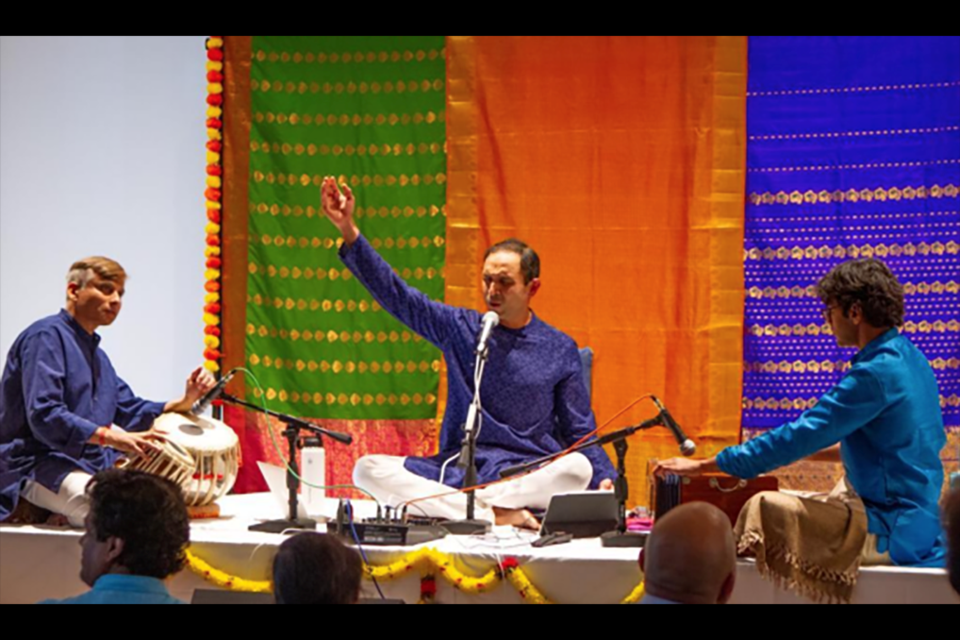About 100 people braved the rain on Sept. 9 to pack into the Baliga family’s McLean home for “Padaarpan: An Evening of Khayal” – Ashwin Baliga’s Hindustani (North Indian classical) debut vocal concert.
In the spotlight was the main artist of the evening, Ashwin Baliga, trained under the tutelage of Pandit Milind Chittal for a decade. Baliga’s co-artists were two local musical stars, Shreyas Ravi on the harmonium and Jay Parikh on the tabla.
Ravi, an award-winning musician, shined on the harmonium, an organ-like instrument played with one hand on the keyboard. Parikh provided the essential rhythmic support with his lightning-like finger movements on the Indian hand drums.
Hindustani classical music is largely played in a jazz-like style, using rāag-based structures with constant extempore improvisation. The trio appeared musically bound together in every detail, right down to their coincidentally coordinated blue attire.
The audience ranged from young children to seniors and from family friends to local community members who discovered the event through word-of-mouth. The artists particularly took into consideration the diversity of the crowd and found creative ways to please both the longtime enthusiasts as well as absolute newcomers.
One of the most appreciated aspects of the evening was the inclusive use of a digital display to support the music with historical notes, captions and translations of ongoing compositions. The singer paused between pieces to provide succinct context for each piece, as well. These novel and incredibly effective additions fully opened Hindustani classical music to listeners from all walks of life, assuring a meaningful and enjoyable experience.
Baliga started the concert with a rare vocal introduction called NomThom in rāag shuddh kalyan and then followed with a bandish (fixed composition) in vilambit taal (slow tempo), followed by a couple of increasingly fast tempoed drut bandishes. Then, a beautiful bandish in the raga jaijaivanti emerged, appended by a faster-paced series of notes (known as a taranaa).
Later, Baliga broke from the traditional brij bhasha (an ancient Indian language) and surprised the audience with a soul-stirring bhajan (religious song) in rāag darbari sung in the language kannada, paying homage to his upbringing in Bangalore, India.
The artist, with his own creative departures from the norms, continued the evening with a complex performance of a rāagmala. Translating to a garland of ragas, the rāagmala chained together many different rāags flowing one after the other.
Finally, the trio presented rāag bhairavi, which conventionally marks the end of a Hindustani concert. Here, Baliga presented a uniquely creative idea with his choice of composition by picking “Mile Sur Mera Tumhara,” a very popular TV song from the 1980s highlighting India’s unity in diversity.
While the trio was strong, if you measure by applause and reactions, the real stars of the concert were the Baligas’ young twin boys, who delivered flawless introductions to begin the show and a heartfelt thank-you note as the concert ended.
By the time the artists stepped down to greet the audience, the storm may have ceased outdoors, but the audience was just getting started with requests for Ashwin Baliga to encore at larger and more varied venues.
For additional information, e-mail [email protected].



